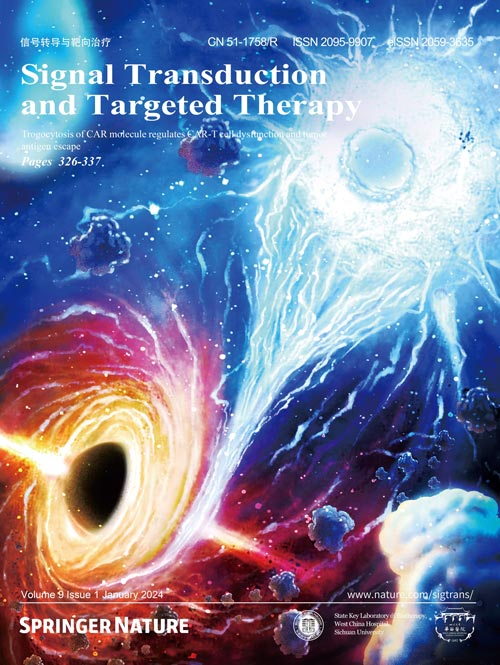Volume 9 Issue 1, Jan 2024:
Article
Antigen-induced chimeric antigen receptor multimerization amplifies on-tumor cytotoxicity
Yan Sun,Xiu-Na Yang
ORCID: orcid.org/0000-0003-3443-9815,Shuang-Shuang Yang
ORCID: orcid.org/0000-0002-8268-5343,Yi-Zhu Lyu,Bing Zhang,Kai-Wen Liu
ORCID: orcid.org/0000-0002-2186-8031,Na Li,Jia-Chen Cui,Guang-Xiang Huang,Cheng-Lin Liu
ORCID: orcid.org/0009-0000-5322-8621,Jie Xu,Jian-Qing Mi,Zhu Chen,Xiao-Hu Fan,Sai-Juan Chen
ORCID: orcid.org/0000-0003-3789-1284 &…Shuo Chen
Ligand-induced receptor dimerization or oligomerization is a widespread mechanism for ensuring communication specificity, safeguarding receptor activation, and facilitating amplification of signal transduction across the cellular membrane. However, cell-surface antigen-induced multimerization (dubbed AIM herein) has not yet been consciously leveraged in chimeric antigen receptor (CAR) engineering for enriching T cell-based therapies. We co-developed ciltacabtagene autoleucel (cilta-cel), whose CAR incorporates two B-cell maturation antigen (BCMA)-targeted nanobodies in tandem, for treating multiple myeloma. Here we elucidated a structural and functional model in which BCMA-induced cilta-cel CAR multimerization amplifies myeloma-targeted T cell-mediated cytotoxicity. Crystallographic analysis of BCMA–nanobody complexes revealed atomic details of antigen–antibody hetero-multimerization whilst analytical ultracentrifugation and small-angle X-ray scattering characterized interdependent BCMA apposition and CAR juxtaposition in solution. BCMA-induced nanobody CAR multimerization enhanced cytotoxicity, alongside elevated immune synapse formation and cytotoxicity-mediating cytokine release, towards myeloma-derived cells. Our results provide a framework for contemplating the AIM approach in designing next-generation CARs.
